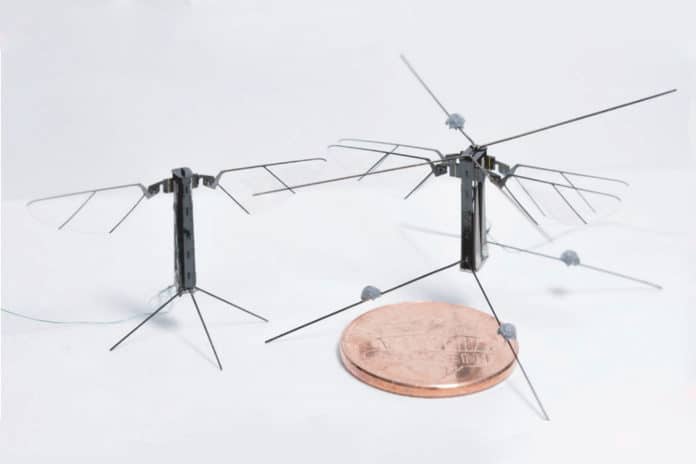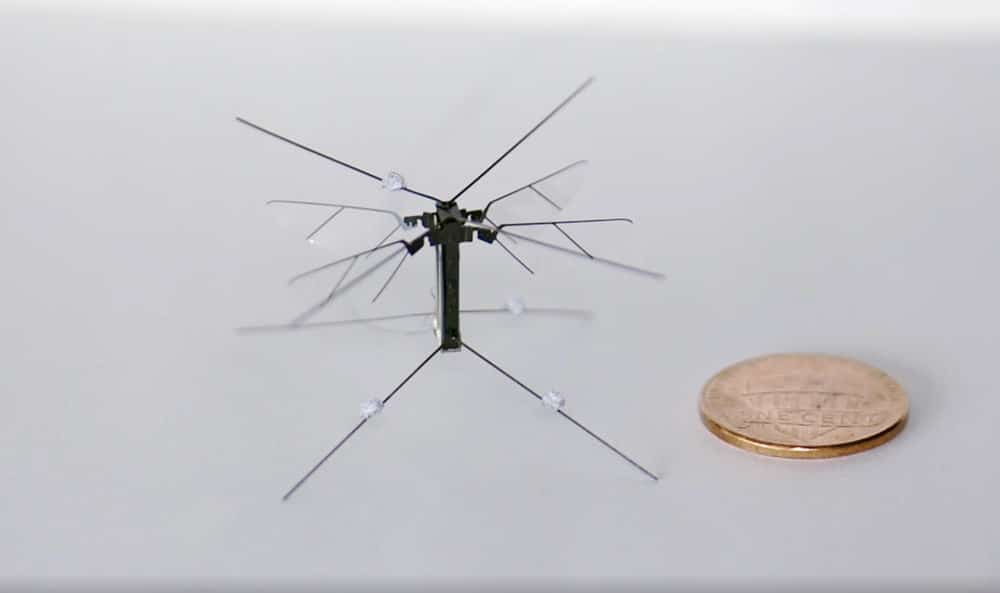The robot insects can be very helpful for humans in search, rescue, and other hazardous operations. These tiny robotic insects could also be used for spying. But integrating the power supplies, onboard sensors, control, and stability can be problematic at the micro-scale.
The University of Southern California (USC) engineers in Los Angeles have built a tiny flying robot called Bee+. This four-winged insect-like robot weighs only 95 grams.
The smallest flying machine was created by Harvard University researchers called RoboBees. It was a bee-size robot with the ability to lift off the ground and hover mid-air when tethered to a power supply. It weighed only 75 grams and featured two flapping wings, each of which was powered by a separate tiny actuator. But with two flapping wings, the RoboBee was unable to generate the necessary forces to take a controlled flight.
A controlled flight would be possible for an insect machine having four flapping wings, just like a real insect. However, it will require an actuator that is significantly lighter.
The research team at USC has managed to develop actuators that are half the weight of previous versions. And using four of them, they built a robot with four flapping wings. The team created a new ‘unimorph’ design that relies on a single strip of piezoelectric material. This actuator expands and contracts when current is sent through it.
The previous version of the smallest actuator was bimorphs used in RoboBee, which was made of two piezoelectric layers. And the weight of two actuators when they are equipped in the RoboBee was about 50 milligrams.
Whereas the four unimorph actuators weigh only 56 milligrams, just a few grams more than two bimorphs. “The novel design significantly reduces the complexity of the fabrication process and the statistical frequency of assembling errors compared to that of the two-wing robots,” said Yang, a team member.
The flying insect- Bee+ can perch, land, follow a path, and avoid obstacles.
One of the drawbacks of these small insect-like flyers, such as RoboBee and Bee+, is that it must be powered via a tether. And this allows Yang and the team to demonstrate its flying capability without worrying about the separate challenge of energy storage.
The engineers will need to reduce the size and weight of the machine, and that too considering the problem of power storage, which is even more difficult.

